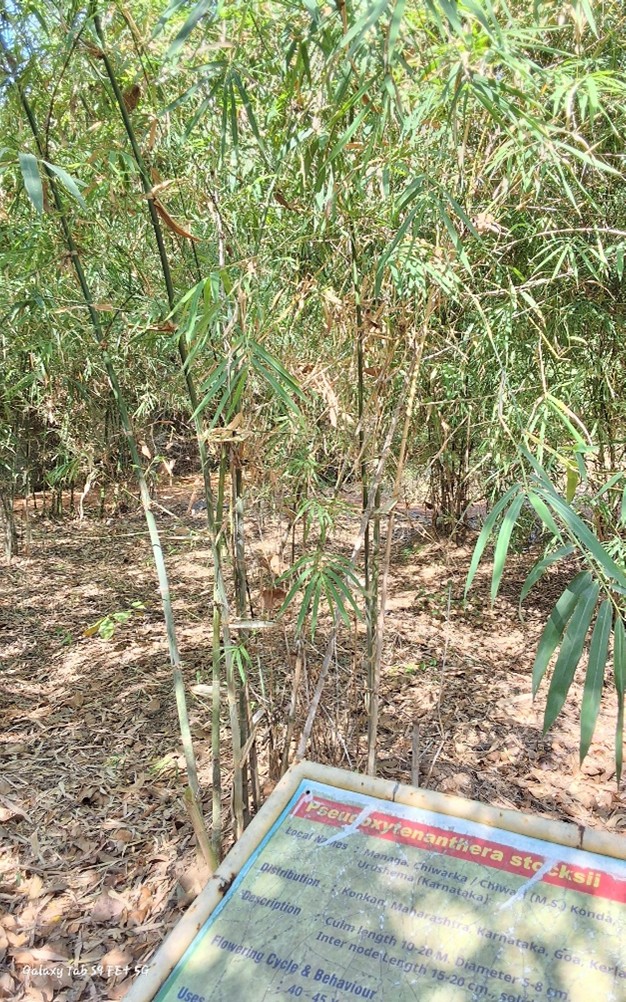Pseudoxytenanthera stocksii

Pseudoxytenanthera stocksii
commonly known as Solid Bamboo,and Synonym = Dendrocalamus stocksii
is referred to as Managa Bamboo in Marathi. The family of Pseudoxytenanthera stocksii is Poaceae. This species is predominantly found in the Western Ghats of India, particularly in regions like Maharashtra, Goa, and Karnataka.
This medium-sized, evergreen bamboo typically reaches heights between 10 to 15 meters, with culm diameters ranging from 5 to 8 cm. The internodes measure approximately 15 to 30 cm in length and are thick-walled. Notably, the culms are solid, making them exceptionally durable and resistant to splitting.
Ecologically, P./D. stocksii plays a vital role in soil conservation. Its robust root system prevents soil erosion effectively, particularly in hilly terrains and along riverbanks. Additionally, this bamboo species contributes to carbon sequestration, enhances soil fertility, and is well-suited for cultivation on degraded or marginal lands.
In Maharashtra, this bamboo species is a cornerstone of local economies and cultural practices. It is extensively used in construction, particularly for house frames, scaffolding, and fencing. The culms are crafted into furniture, baskets, mats, and other utility items. Its solid culms are especially preferred for making agricultural implements. This bamboo species is also gaining attention as a raw material for the handicrafts and paper pulp industry.
The species is known for its resilience and adaptability. It thrives in a range of soil types, including lateritic, sandy, and well-drained loams, with a preferred pH range of 5.5 to 7.5. Dendrocalamus stocksii is drought-resistant and grows well in regions receiving annual rainfall between 700 to 3000 mm. It is commonly found in altitudes up to 1200 meters above sea level.
Propagation of P./D. stocksii is achieved through rhizome cuttings, offset cuttings, or tissue culture, as the species does not produce viable seeds. offset cuttings and tissue culture are widely used for large-scale propagation due to their efficiency and reliability.
Bamboos, including P./D. stocksii, are generally monocarpic, meaning they flower once in their lifetime, followed by a mass seeding event and subsequent die-off. This species is known for sporadic flowering, with cycles varying across regions. However, unlike some other bamboo species, gregarious flowering is rare in Dendrocalamus stocksii, making it a more stable option for plantations.
Listen Audio:
Need assistance? BRTC Faculty